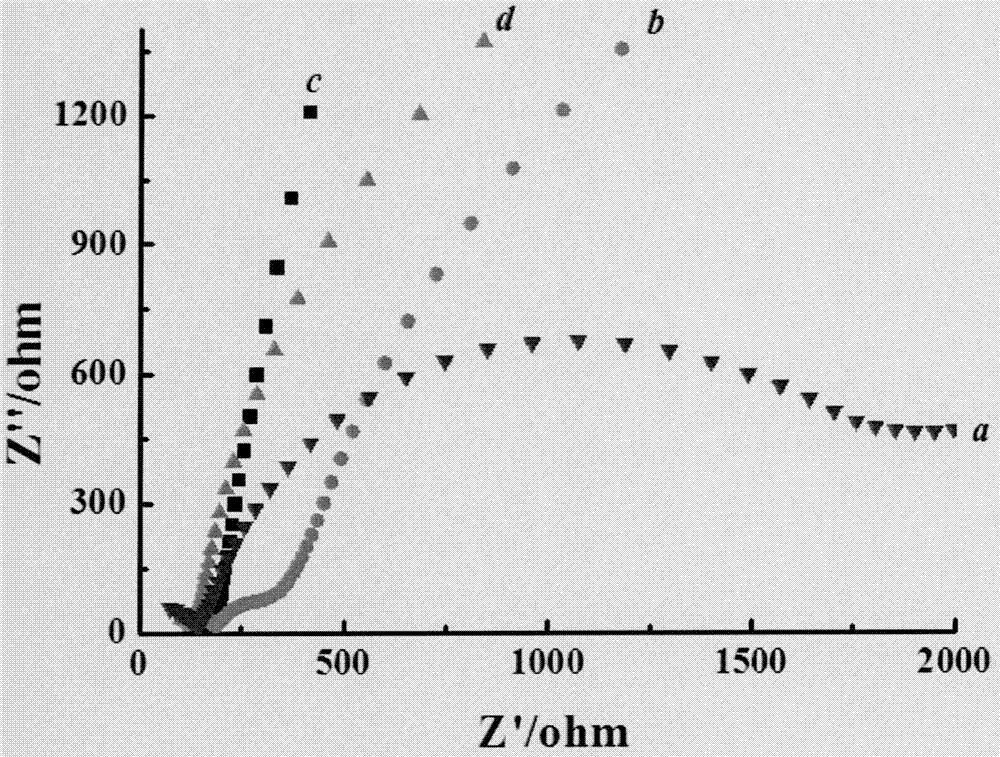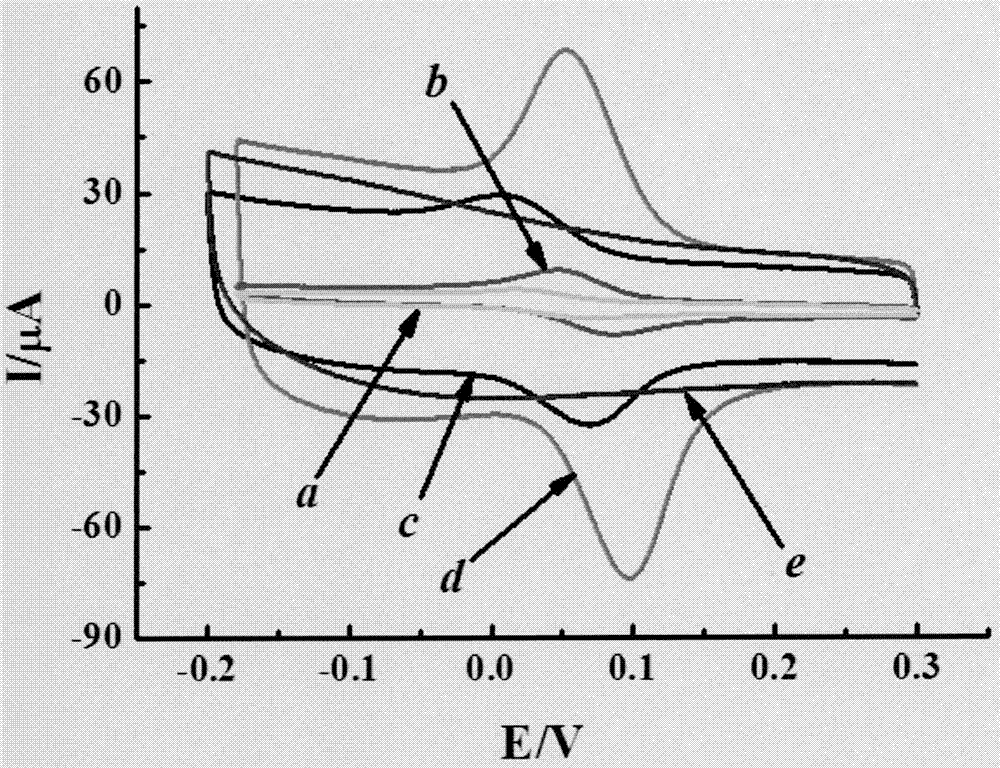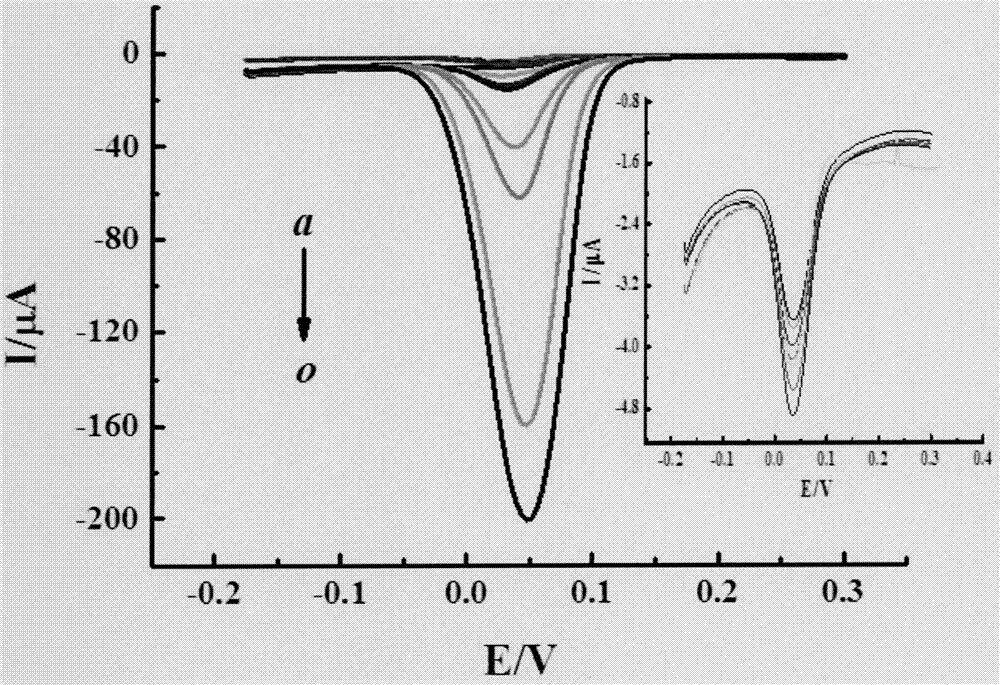Preparation method of multi-wall carbon nanotube/poly L-histidine modified glass carbon electrode and application thereof in determining hydroquinone
A technology of multi-walled carbon nanotubes and glassy carbon electrodes, which is applied in the preparation of multi-walled carbon nanotubes/poly-L-histidine modified glassy carbon electrodes, and the application fields in the determination of hydroquinone, can solve the electrochemical response poor and other problems, to achieve good biocompatibility, good mechanical strength, and a wide range of applications
- Summary
- Abstract
- Description
- Claims
- Application Information
AI Technical Summary
Problems solved by technology
Method used
Image
Examples
Embodiment 1
[0016] The preparation method of the multi-walled carbon nanotube / poly-L-histidine modified glassy carbon electrode comprises the following steps: ① Firstly, the glassy carbon electrode with an effective diameter of 3 mm) is polished on sandpaper, and then the oxide layer with 0.3 μm and 0.05 μm is successively poured Polish the aluminum suede to a mirror surface, then rinse the electrode surface with deionized water, then perform ultrasonic cleaning for 2 to 3 minutes, and dry it for later use; -3 In the PBS buffer solution of mol / L L-histidine pH=7.0, within the potential range of -1.2-2.0V, perform electrochemical scanning polymerization at a scan rate of 50mV / s for 15 cycles (30 segments), take it out and dry it in the air , to prepare poly-L-histidine-modified glassy carbon electrode (poly-L-HiS / GCE); ③ first add multi-walled carbon nanotubes into distilled water, and ultrasonicate for 2 hours to make 1 mg / mL black suspension of MWCNTs (stock solution ), then use a micros...
PUM
| Property | Measurement | Unit |
|---|---|---|
| diameter | aaaaa | aaaaa |
Abstract
Description
Claims
Application Information
 Login to View More
Login to View More - R&D
- Intellectual Property
- Life Sciences
- Materials
- Tech Scout
- Unparalleled Data Quality
- Higher Quality Content
- 60% Fewer Hallucinations
Browse by: Latest US Patents, China's latest patents, Technical Efficacy Thesaurus, Application Domain, Technology Topic, Popular Technical Reports.
© 2025 PatSnap. All rights reserved.Legal|Privacy policy|Modern Slavery Act Transparency Statement|Sitemap|About US| Contact US: help@patsnap.com



